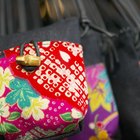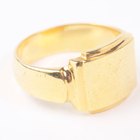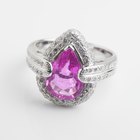In order for a business to cover all its costs and make a profit, it must sell an item for more than it paid for it. This is known as markup. Retail fashion stores must consider several things when determining markup for its items, such as how much it paid for the clothing item, how much it paid to have it shipped, employee wages, costs for the store, taxes and other expenses.
Markup
A standard markup for retail fashion stores is around 56 percent. For example, a store takes the cost of an item and multiples it by 2.3. Thus, when an item costs the store $25, that number is multiplied by 2.3, to get $57.50. This is the price a store should sell this item at to attain the 56 percent margin. However, a store might find it needs to make a higher profit and thus would have to use a higher profit margin.
What Consumers Will Pay
Markup is also affected by what consumers are willing to pay for an item. Some fashion stores build up a reputation as having high-quality or trendy items and consumers are willing to spend a high amount to attain these items. Thus, this store can charge an even higher markup than average, because its customers are fine with spending that extra money. For other stores, this is not the case.
Competition
Some stores sell similar fashion items and must compete with each other for sales. This causes stores to occasionally sell below the typical markup in order to stay in business and remain profitable. As well, stores offer sales. One t-shirt might be $10, but if you buy two t-shirts, the store offers a discount and those two shirts cost you $17, meaning the store is making less money than if those two t-shirts were bought separately.
Other Considerations
Markup is typically not equal for each item. Some items garner a higher markup, due to popularity and demand. Others are less popular and to at least make some profit, are sold at a lower markup. As well, stores offer coupons, sales and discounts to entice people to shop, making them less money on the items. Likewise, stores reward their employees by giving them employee discounts. In exchange for the loyal service, a store makes less money on an item.
Related Articles
What Is Consignment?

Where Can I Buy an International Phone ...

What Is Stainless Steel Jewelry?

How to Find Wholesale Authentic Handbags

How to Open an Online Bridal Store

How to Hold a Penny War Fundraiser

How to Start Your Own Business Sewing ...

Why Can't You Return Unworn Nike Shoes ...

How to Create a Wedding Registry at ...

How to Put a Price on Resale Jewelry

Where to Find Walden Farms Products

What Does Couture Mean in the Fashion ...

What Are the Differences Among 24K, 22K ...

How to Price the Worth of Household ...

How to Sell Raffle Tickets to Raise ...

Difference in Misses, Juniors, and ...

How to Buy Bulk Cosmetics Cheaper Than ...

How to Figure Costs for a Banquet

What Does 585 Mean on Gold?

How to Negotiate on Jewelry
Writer Bio
Chris Brower is a writer with a B.A. in English. He also spent time studying journalism and utilizes both to deliver well-written content, paying close attention to audience, and knowing one word could determine whether a product is a success or a failure. He has experience writing articles, press releases, radio scripts, novels, short stories, poems and more.